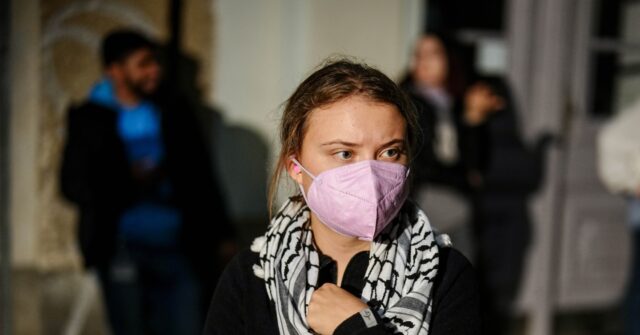Greta Thunberg, once heralded as a prominent figure in the global climate change movement, has recently shifted her focus to the Palestinian cause, marking a notable change in her activism. Participating in a protest in Berlin on the anniversary of the October 7th attacks on Israel, Thunberg’s alignment with the Palestinian struggle demonstrates a broader acknowledgment of various issues around the world. During the “Solidarity with Palestine” rally, Thunberg donned a keffiyeh scarf and vocally criticized the German government for its perceived complicity in what she termed the “genocide” in Gaza due to its support for Israeli military actions against Hamas, the group responsible for the attacks.
At the rally, Thunberg expressed her deep distress over the treatment of peaceful protesters in Germany who oppose what they see as state-sanctioned violence. Her accusation against the German government rested on the assertion that its policies provide financial and political backing for Israel, thus perpetuating what she described as an “apartheid-state occupation.” Thunberg’s emotional response highlights her commitment to social justice issues beyond climate change, suggesting a more expansive view of activism that encompasses human rights.
The Berlin protest, however, escalated into violence, with reports of protestors clashing with police. Tensions heightened as some demonstrators hurled objects at law enforcement and chanted aggressive slogans suggesting violence against the Israeli state. Phrases advocating for an “Intifada” and the genocidal chant “From the river to the sea, Palestine will be free” were prominent, indicating a militant sentiment among certain factions of the crowd. These dual narratives of Thunberg’s activism and the ensuing violence at the protest present a complex picture of modern activism, where issues of social justice intertwine with rising tensions and violence.
This protest in Berlin was not an isolated incident; it follows a broader trend of anti-Israel demonstrations across Europe, many of which ended in confrontations with police. For instance, in Rome, a similar protest resulted in injuries to dozens of law enforcement officers as altercations broke out, leading police to deploy water cannons and tear gas in response to violent protests. These events indicate a growing atmosphere of unrest surrounding the Israeli-Palestinian conflict, with significant societal divisions emerging in public demonstrations.
Thunberg’s involvement in Palestine protests marks a significant evolution in her activist journey, which initially began with climate strikes at the tender age of 15. Her recent actions reflect a strategic pivot towards more contentious political debates, including the conflict between Israel and Palestine. Just a month prior, she was part of a blockade at the University of Copenhagen, advocating for the university to divest from Israeli entities. This demonstrates a transition towards leveraging her influence to support political causes, suggesting a departure from her solely environmental focus.
The connection between major social justice issues and climate activism has become increasingly evident as Thunberg navigates her role within the activist landscape. Her shift towards the Palestinian cause opens discussions about the interplay between various movements and the potential for holistic approaches in activism. This evolution raises questions about the impact of global conflicts on the climate movement, and whether activism can successfully encompass multiple, sometimes conflicting priorities, or whether it can lead to divisions within broader movements, highlighting the complexity of advocacy in today’s world.

